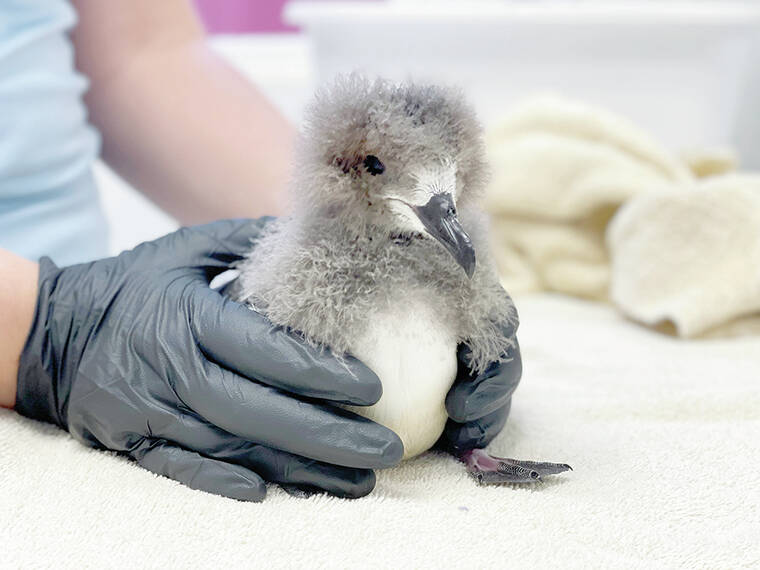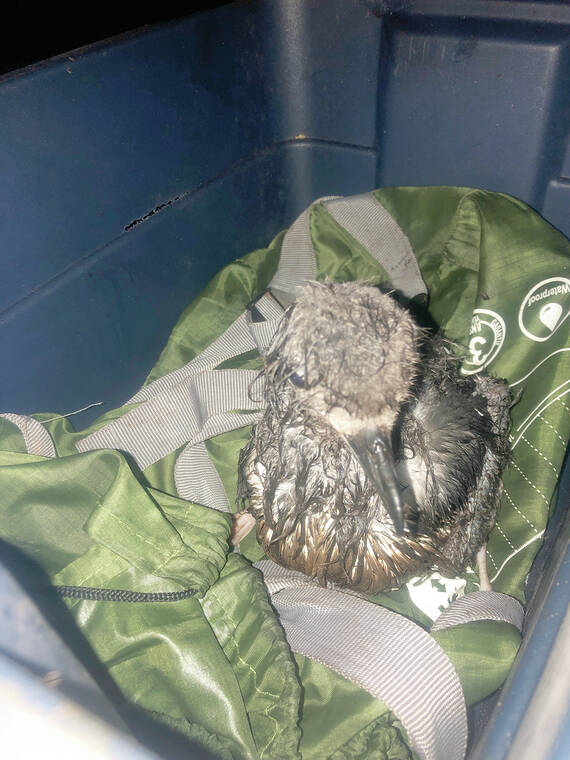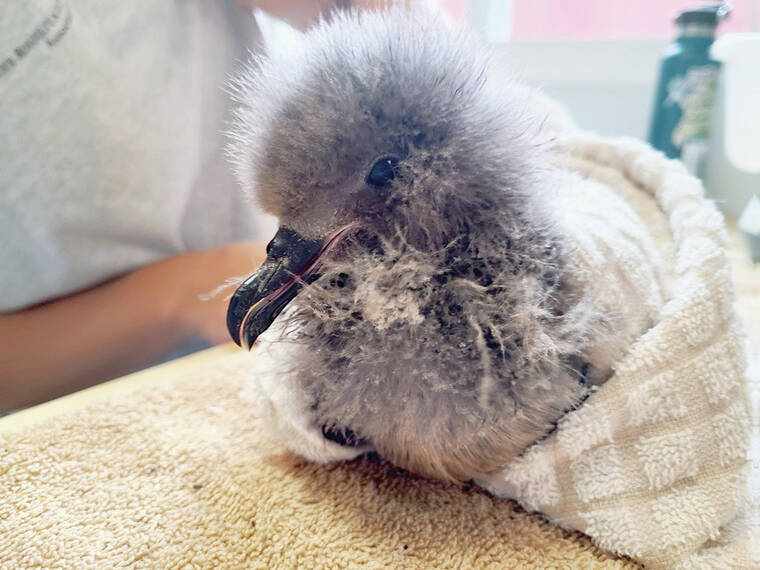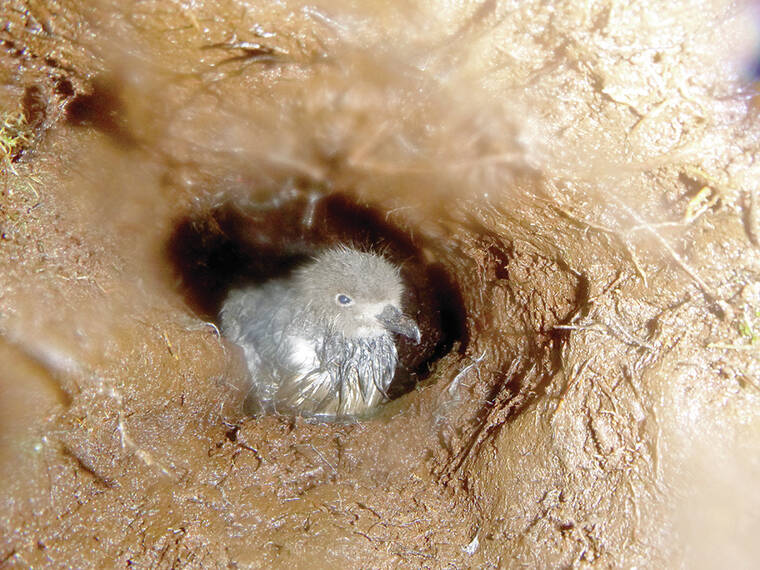LIHU‘E — Fewer shearwaters than usual have been affected by artificial outdoor lighting in 2021, halfway through peak seabird fallout season on Kaua‘i.
Forty-one federally threatened Newell’s shearwater, or ‘a‘o (Puffinus auricularis newelli), have been reported grounded on Kaua‘i to date. All but three were reported since the beginning of fallout season, when fledglings fly to sea using the moon as their guide, on Sept. 15.
The data comes from native wildlife-rehabilitation facility Save Our Shearwaters, which is also treating a federally endangered Hawaiian petrel, or ‘ua‘u (Pterodroma sandwichensis), rescued from a flooded burrow earlier this month.
“It has been a light year. Last year, at this time, we had 97,” SOS Program Coordinator Molly Bache said.
It’s too early to draw conclusions from the difference, according to Bache. A number of variables, including changes in the lunar cycle, the moon’s rise and set, weather, reporting and human activity, can affect recorded fallout rates.
It’s also too early to gauge the impact of fallout on other species, like the Hawaiian petrel and the wedge-tailed shearwater, or ‘ua‘u kani (Puffinus pacificus). Both of these birds tend to fledge later in the year, toward the end of peak-fallout season that ends Dec. 15.
The Hawaiian petrel now rehabilitating at SOS was taken from the Hono o Na Pali Natural Area Reserve by members of Archipelago Research and Conservation. ARC then contacted local business Airborne Aviation, which agreed to fly the bird to SOS personnel waiting at Lihu‘e Airport.
The soaked, muddy fledgling would have otherwise died of hypothermia, according to ARC Science Director Dr. André Raine.
Both Raine and Bache said providing treatment in such cases is important to the future of the overall species.
“If you think about these birds, once they leave the island they’re going to go to sea, and a very small number of them are actually going to survive to come back to breed,” Raine said. “You want to have as many birds out there as possible to ensure that some of them are going to come back, and with an endangered species, every single bird counts.”
Wild Newell’s shearwater and Hawaiian petrel populations have “bumped along” at extremely low levels since 2013, according to Raine, who published a paper tracing the species’ decline between 1993 and 2013.
Kaua‘i lost 94% of its Newell’s shearwaters and 78% of its Hawaiian petrels within that two-decade timeframe, Raine said.
Meanwhile, ARC’s rescued petrel is no longer in immediate danger, although its fate remains uncertain as SOS personnel continue to monitor its in initial symptoms. These included low weight, a distended stomach and potentially ruptured subcutaneous air sacs located along its sides.
“The question is just going to be, ‘How does he continue to grow?’” Bache said. “It’s still touch-and-go, but that’s rehab, and that’s kind of the reality.”
If healthy, the petrel — identified as MMJ122 — will be taken on so-called “field trips” when it reaches a certain size. On one of these outings, it is hoped it will fly away.
“If they choose to go, they go. If they don’t, they don’t. That’s really just a time to get accustomed to wind and stretch the wings and get used to orienting to a different environment,” Bache explained.
MMJ122 would then spend the next three to four years eating squid on the open ocean before, hopefully, returning to Kaua‘i to breed and nest.
Downed seabirds can be reported to SOS at 808-635-5117.
•••
Scott Yunker, general-assignment reporter, can be reached at 245-0437 or syunker@thegardenisland.com.








